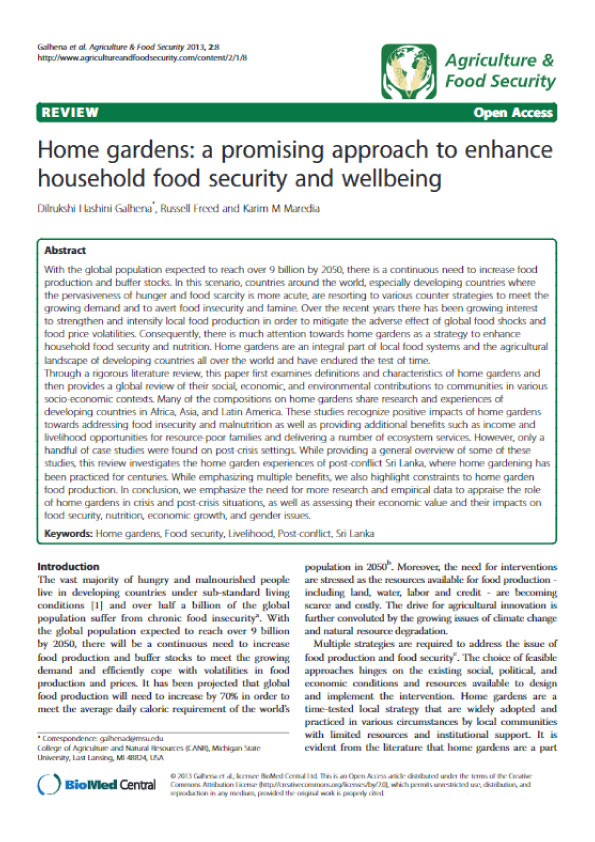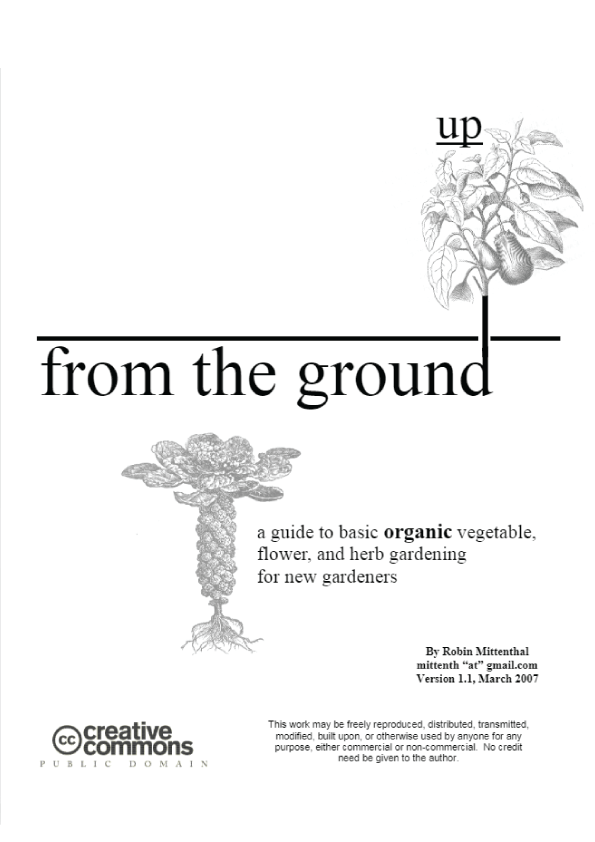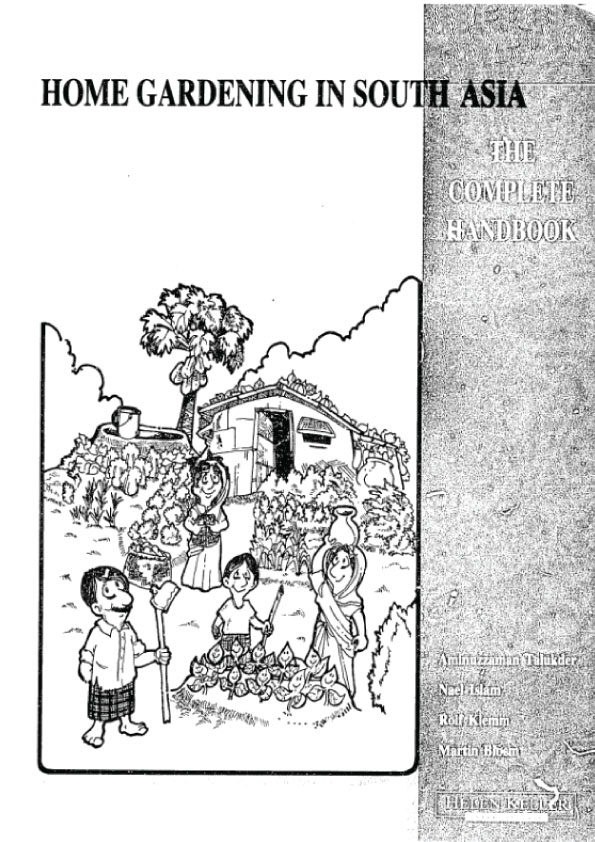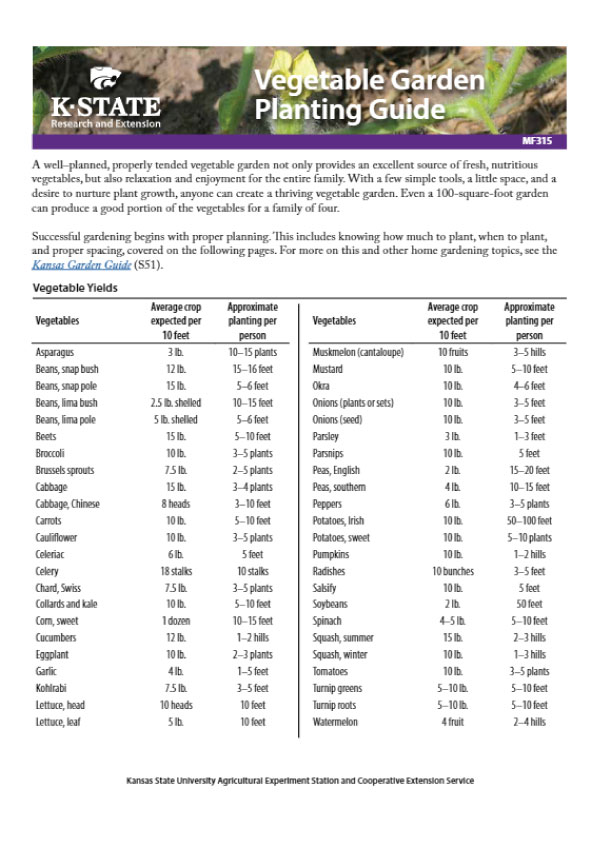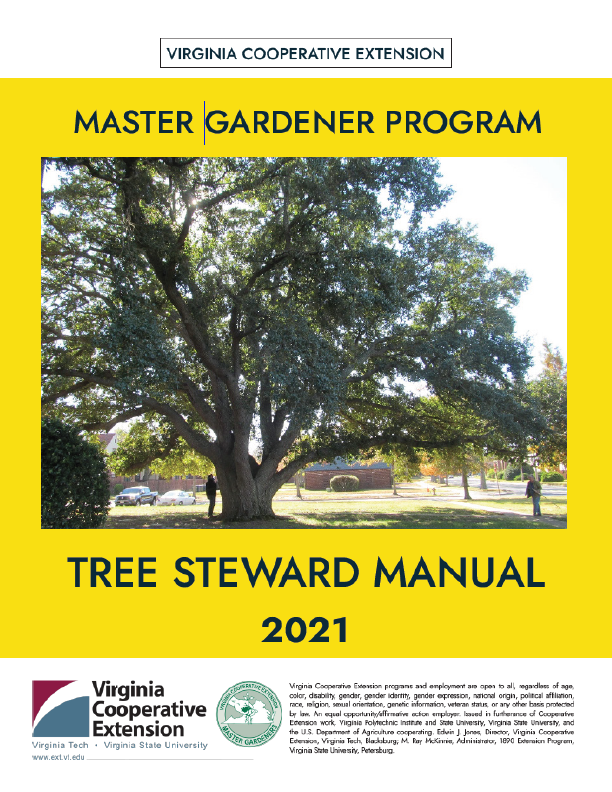Abstract
With the global population expected to reach over 9 billion by 2050, there is a continuous need to increase food production and buffer stocks. In this scenario, countries around the world, especially developing countries where the pervasiveness of hunger and food scarcity is more acute, are resorting to various counter strategies to meet the growing demand and to avert food insecurity and famine. Over the recent years there has been growing interest to strengthen and intensify local food production in order to mitigate the adverse effect of global food shocks and food price volatilities. Consequently, there is much attention towards home gardens as a strategy to enhance household food security and nutrition. Home gardens are an integral part of local food systems and the agricultural landscape of developing countries all over the world and have endured the test of time. Through a rigorous literature review, this paper first examines definitions and characteristics of home gardens and then provides a global review of their social, economic, and environmental contributions to communities in various socio-economic contexts. Many of the compositions on home gardens share research and experiences of developing countries in Africa, Asia, and Latin America. These studies recognize positive impacts of home gardens towards addressing food insecurity and malnutrition as well as providing additional benefits such as income and livelihood opportunities for resource-poor families and delivering a number of ecosystem services. However, only a handful of case studies were found on post-crisis settings. While providing a general overview of some of these studies, this review investigates the home garden experiences of post-conflict Sri Lanka, where home gardening has been practiced for centuries. While emphasizing multiple benefits, we also highlight constraints to home garden food production. In conclusion, we emphasize the need for more research and empirical data to appraise the role of home gardens in crisis and post-crisis situations, as well as assessing their economic value and their impacts on food security, nutrition, economic growth, and gender issues.
Introduction
The vast majority of hungry and malnourished people live in developing countries under sub-standard living conditions and over half a billion of the global population suffer from chronic food insecurity a . With the global population expected to reach over 9 billion by 2050, there will be a continuous need to increase
food production and buffer stocks to meet the growing demand and efficiently cope with volatilities in food production and prices. It has been projected that global food production will need to increase by 70% in order to meet the average daily caloric requirement of the world’s population in 2050b . Moreover, the need for interventions are stressed as the resources available for food production including land, water, labor and credit – are becoming scarce and costly. The drive for agricultural innovation is further convoluted by the growing issues of climate change and natural resource degradation.
Multiple strategies are required to address the issue of food production and food security . The choice of feasible approaches hinges on the existing social, political, and economic conditions and resources available to design and implement the intervention. Home gardens are a time-tested local strategy that are widely adopted and practiced in various circumstances by local communities with limited resources and institutional support. It is evident from the literature that home gardens are a part of the agriculture and food production systems in many developing countries and are widely used as a remedy to alleviate hunger and malnutrition in the face of a global food crisis.
Globally, home gardens have been documented as an important supplemental source contributing to food and nutritional security and livelihoods. ‘Food production on small plots adjacent to human settlements is the oldest and most enduring form of cultivation’ . For centuries, home gardens have been an integral component of family farming and local food systems. Home gardening is an ancient and widespread practice all over the world. In the literature, home gardens are classified as mixed, kitchen, backyard, farmyard, compound or homestead garden.
This paper presents the developing country experiences of home gardens and looks at the specific case of post-conflict Sri Lanka . An extensive literature search was conducted through the review of over 100 publications, reports, and book chapters, covering various aspects of home gardening to develop the theoretical framework. The inherent characteristics of home gardens as well as the contextual attributes, benefits, and constraints captured in the literature are summarized in the following sections.
